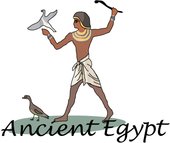Canopic jar
|
|
In addition to hieroglyphs, figures of gods was often painted on the jars. These were the four sons of Horus, the guardians of the organs:
- Imset (depicted as a human) was responsible for the liver;
- Hapi (a baboon) for the lungs;
- Duamutef (a jackal) for the stomach;
- Kebechsenef (a falcon) for the viscera of the lower body.
Alternatively, the jars themselves or their lids were made in the shape of the gods.
The Egyptians considered the heart to be the seat of the soul, so it was the only organ not removed from the body. The brain was not preserved (it was held responsible for producing mucus), but was liquefied and completely drained from the corpse through the nostrils.
Sometimes the covers of the jars were modeled after (or painted to resemble) the head of Anubis, the embalming god. These vases have an elongated form, and surviving examples of them can be seen in some museums. The canopic jars were buried in tombs together with the sarcophagus of the deceased, in order to preserve the integrity of the entire body after death (the viscera were extracted to prevent the putrefaction of the corpse).
By extension, due to the similarity of their form, some Etruscan cinerary urns were also called canopic jars, made of clay or bronze, often put on the replica of a throne into the tombs, and with a male or female head modelled on them, representing the deceased's face with the handles having the form of arms.
See also
- Canopus, whence the name
- Horus
- List of Egypt-related topics
- Alabaster
- Kiya
- Sarcophagus

